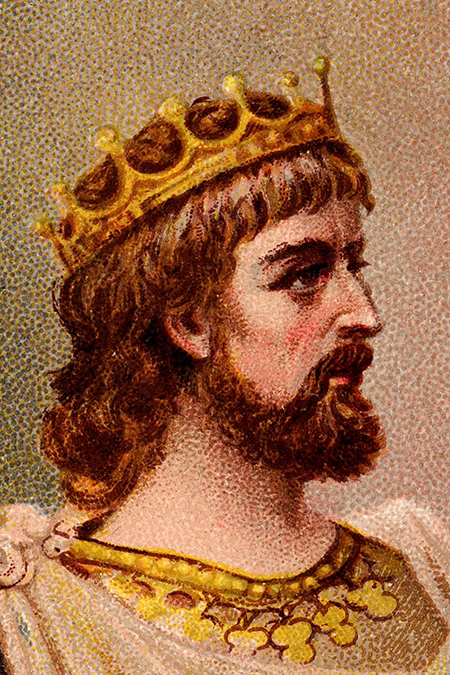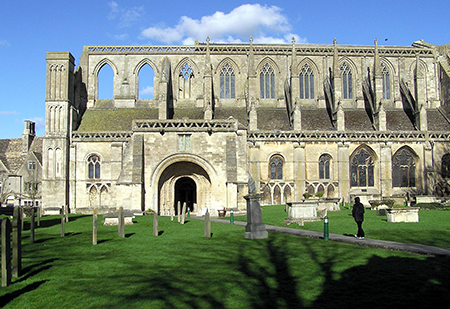



King Aethelstan Ė Quick Stats




Born: c. 894 AD
Died: October 27, 939 AD
Mother: Ecgwynn
Father: King Edward the Elder
Wife: ∆thelstan never married.
Children: None (∆thelstan had no recorded offspring).
Successor: Edmund I (his half-brother)
Predecessor: Edward the Elder
(initially), then ∆lfweard (disputed co-successor, short-lived claim)
Died: October 27, 939 AD
Mother: Ecgwynn
Father: King Edward the Elder
Wife: ∆thelstan never married.
Children: None (∆thelstan had no recorded offspring).
Successor: Edmund I (his half-brother)
Predecessor: Edward the Elder
(initially), then ∆lfweard (disputed co-successor, short-lived claim)

∆thelstanís most famous military campaign culminated in the Battle of Brunanburh in 937, a decisive conflict against a coalition of enemies, including the Norse-Gael king Olaf Guthfrithson, King Constantine II of Scotland, and King Owen I of Strathclyde. The battle was described in detail in the Anglo-Saxon Chronicle, which celebrated it as a great victory for ∆thelstan and his forces. The victory at Brunanburh ensured that England remained united and reinforced ∆thelstanís dominance over the British Isles. The battle was a turning point that demonstrated ∆thelstanís ability to mobilize and lead a powerful army against a formidable alliance.

Malmesbury Abbey where King Aethelstan was buried
Beyond his military achievements, ∆thelstan was also a skilled administrator and lawmaker. He continued the reforms of his grandfather Alfred and his father Edward, working to centralize authority and ensure the stability of his kingdom. ∆thelstan issued numerous legal codes, which addressed issues such as theft, corruption, and the responsibilities of local leaders. These laws emphasized the importance of justice and the kingís role as the protector of his people. ∆thelstan also fostered a strong relationship between the monarchy and the Church, using religion as a unifying force within his kingdom. He was a patron of monasteries and religious institutions, supporting the production of manuscripts and the spread of Christian teachings.
∆thelstanís reign was also marked by his diplomatic efforts, which extended far beyond the borders of England. He cultivated relationships with rulers across Europe, arranging marriages between his family members and other royal households. These alliances helped to enhance Englandís prestige and secure ∆thelstanís position as a major player on the European stage. Notably, ∆thelstanís sisters were married to influential rulers, including Charles the Simple of West Francia and Hugh the Great, a powerful noble in the Frankish kingdom. These alliances not only strengthened ∆thelstanís political position but also facilitated cultural exchange between England and the Continent.
Culturally, ∆thelstanís court was a center of learning and artistic production. He was a patron of scholars and poets, and his reign saw the creation of illuminated manuscripts and other works of art. ∆thelstan was known for his collection of relics and his donations to churches, which underscored his piety and his commitment to promoting Christianity. His court was a meeting place for intellectuals and clergy, reflecting the kingís interest in fostering a culture of learning and devotion.
∆thelstan died on October 27, 939, at the age of approximately 45. He was buried at Malmesbury Abbey, a site he had favored during his lifetime. Despite his relatively short reign, ∆thelstanís impact on the history of England was profound. He left behind a kingdom that was more unified and stable than it had ever been, setting the stage for his successors to build upon his achievements.
∆thelstanís legacy has endured as a testament to his vision, leadership, and achievements. He was not only a warrior king who defended and expanded his realm but also a statesman who sought to create a just and unified society. His efforts to centralize authority, codify laws, and promote Christianity helped to shape the identity of England as a nation. Modern historians recognize ∆thelstan as one of the most significant figures in Anglo-Saxon history, a ruler whose contributions laid the foundation for the England we know today.
Culturally, ∆thelstanís court was a center of learning and artistic production. He was a patron of scholars and poets, and his reign saw the creation of illuminated manuscripts and other works of art. ∆thelstan was known for his collection of relics and his donations to churches, which underscored his piety and his commitment to promoting Christianity. His court was a meeting place for intellectuals and clergy, reflecting the kingís interest in fostering a culture of learning and devotion.
∆thelstan died on October 27, 939, at the age of approximately 45. He was buried at Malmesbury Abbey, a site he had favored during his lifetime. Despite his relatively short reign, ∆thelstanís impact on the history of England was profound. He left behind a kingdom that was more unified and stable than it had ever been, setting the stage for his successors to build upon his achievements.
∆thelstanís legacy has endured as a testament to his vision, leadership, and achievements. He was not only a warrior king who defended and expanded his realm but also a statesman who sought to create a just and unified society. His efforts to centralize authority, codify laws, and promote Christianity helped to shape the identity of England as a nation. Modern historians recognize ∆thelstan as one of the most significant figures in Anglo-Saxon history, a ruler whose contributions laid the foundation for the England we know today.
King ∆thelstan: The First King of England
King ∆thelstan, who reigned from 924 to 939 AD, is widely regarded as the first true King of England. His reign marked a turning point in the history of the Anglo-Saxon kingdoms, as he unified disparate territories into a single realm and established England as a major power in medieval Europe. ∆thelstanís achievements in military conquest, lawmaking, diplomacy, and cultural patronage have earned him a prominent place among the greatest kings of early medieval Britain.
∆thelstan was born around 894 AD, the son of King Edward the Elder and his first wife, Ecgwynn. From a young age, he was groomed for leadership. His grandfather, Alfred the Great, ensured that his descendants received an education that combined military training with a strong grounding in Christian values and governance. ∆thelstan grew up in a world shaped by Alfredís reforms and Edwardís military campaigns, which laid the groundwork for the unification of England.
Upon Edward the Elderís death in 924, ∆thelstan faced significant challenges to his rule. Although he was the eldest son, his claim to the throne was contested, particularly in Mercia, where his legitimacy was questioned by some factions. Despite these initial obstacles, ∆thelstan was crowned king in 925 at Kingston upon Thames. His coronation was notable for its emphasis on his role as a divinely chosen ruler, reflecting the increasing importance of Christian kingship in Anglo-Saxon England.
One of ∆thelstanís most significant achievements was his military success, which secured his position as the dominant ruler in the British Isles. In 927, he achieved a major victory by capturing York from the Norse Vikings, effectively ending their rule in Northumbria. This conquest marked the first time that the entirety of England was under a single ruler, solidifying ∆thelstanís reputation as the first true King of England. Following this victory, ∆thelstan expanded his influence further, gaining the submission of rulers in Scotland, Wales, and Cornwall. He was recognized as an overlord, a ruler of rulers, a status that few Anglo-Saxon kings had achieved before him.


